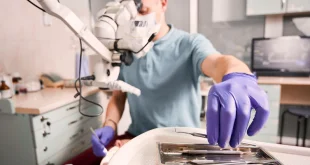The history of antibiotics is a fascinating journey that spans centuries and showcases the remarkable progress in medical science. From ancient civilizations’ use of natural remedies to the groundbreaking discovery of modern antibiotics, these life-saving drugs have revolutionized medicine and saved countless lives. This article delves into the captivating history of antibiotics, exploring the key milestones and scientific breakthroughs that have shaped how we combat infectious diseases.
I. Early Antimicrobial Practices
- Ancient Remedies: Long before the discovery of modern antibiotics, ancient civilizations like the Egyptians and Greeks used various natural substances for wound healing and infection management.
- Traditional Healing Systems: Traditional healing systems in different cultures, such as Chinese and Indian Ayurveda, employed herbs and natural compounds with antimicrobial properties.
II. The Age of Enlightenment and Scientific Inquiry
- Pioneering Experiments: During the Age of Enlightenment, scientists began conducting experiments that laid the groundwork for modern microbiology and understanding infectious diseases.
- Germ Theory: The groundbreaking work of Louis Pasteur and Robert Koch in the 19th century led to the establishment of the germ theory of disease, which revolutionized medical thinking.
III. The Discovery of the First Antibiotic
- Sir Alexander Fleming: In 1928, Scottish scientist Alexander Fleming discovered penicillin, the world’s first antibiotic while studying bacterial cultures.
- Penicillin’s Impact: Penicillin proved a game-changer in treating bacterial infections and saved lives during World War II.
IV. The Golden Age of Antibiotics
- Streptomycin and Beyond: Following penicillin’s discovery, a wave of new antibiotics, including streptomycin and tetracycline, was developed in the mid-20th century.
- Expanding Treatment Options: A diverse range of antibiotics allowed physicians to treat various bacterial infections effectively.
V. Antibiotic Resistance: A Growing Concern
- Emergence of Resistance: As antibiotics became widely used, bacteria began developing resistance to these drugs, leading to a global health concern.
- Addressing Resistance: Efforts to combat antibiotic resistance involve responsible antibiotic use, research into new drugs, and public awareness campaigns.
VI. Modern Antibiotics and Future Prospects
- Synthetic Antibiotics: Advances in chemistry and biotechnology have developed synthetic antibiotics with enhanced efficacy and reduced side effects.
- Combination Therapies: Researchers explore combination antibiotic therapies to address resistance and improve treatment outcomes.
VII. Antibiotics in Agriculture and Livestock
- Agricultural Use: Antibiotics have been used in agriculture to promote animal growth and prevent infections, contributing to the rise of antibiotic-resistant bacteria.
- Farming Practices and Resistance: The impact of antibiotic use in agriculture has prompted the reevaluation of farming practices and regulations.
VIII. The Challenge of New Drug Development
- Discovering New Antibiotics: The search for new antibiotics involves innovative approaches and collaboration between researchers, pharmaceutical companies, and government agencies.
- Investing in Research: Addressing the antibiotic pipeline’s limitations requires increased investment in research and development.
Conclusion
The history of antibiotics is a testament to human ingenuity and perseverance in the face of infectious diseases. From ancient remedies to the discovery of penicillin and the development of modern antibiotics, these drugs have revolutionized medicine and transformed healthcare CTN News
However, the rise of antibiotic resistance poses a significant challenge that calls for collective action and responsible antibiotic use. Understanding the history of antibiotics and learning from past successes and challenges can pave the way for a future where these life-saving drugs continue to play a vital role in safeguarding public health.
As we navigate the complexities of antibiotic resistance and pursue new drug development, collaboration between the scientific community, healthcare professionals, policymakers, and the public remains crucial. By working together, we can ensure that antibiotics remain practical tools in the battle against infectious diseases and preserve their legacy as modern miracle drugs.
 Isaiminia World Breaking News & Top Stories
Isaiminia World Breaking News & Top Stories




